Newsletter
Sign up for Essential California
The most important California stories and recommendations in your inbox every morning.
You may occasionally receive promotional content from the Los Angeles Times.
On a warm Saturday evening in Carson, two dozen young Black performers packed a pair of Chevy Suburbans and a Dodge Charger on their way to a celebration. The vehicles were emblazoned with the crew’s name, “The League of Clowns”; a booking number; and the painted face of its founder, Jesse Philpott, aka Roc’co Tha Clown.
Hip-hop samples blasted from the lead Suburban as the performers approached Maison Jackson’s 5th birthday party.
Moments after parking, Philpott jumped from the truck and launched into a hip-hop clown dance, a style that originated at South L.A. birthday parties in the early ’90s and led to the rise of krumping a few years later.
Sporting a League of Clowns jersey, a jester hat and his signature facepaint, Philpott lurched toward the crowd. He swung his bandana around his head, tossed it on the ground and bounced from side to side with the rhythm — fluid one minute, jerky the next.
Then, with a loud coach’s whistle, he summoned his crew. Fellow clowns, from 35-year-old “Bashful” to 4-year-old “Bam Bam,” each cycled through with their own routine and style.
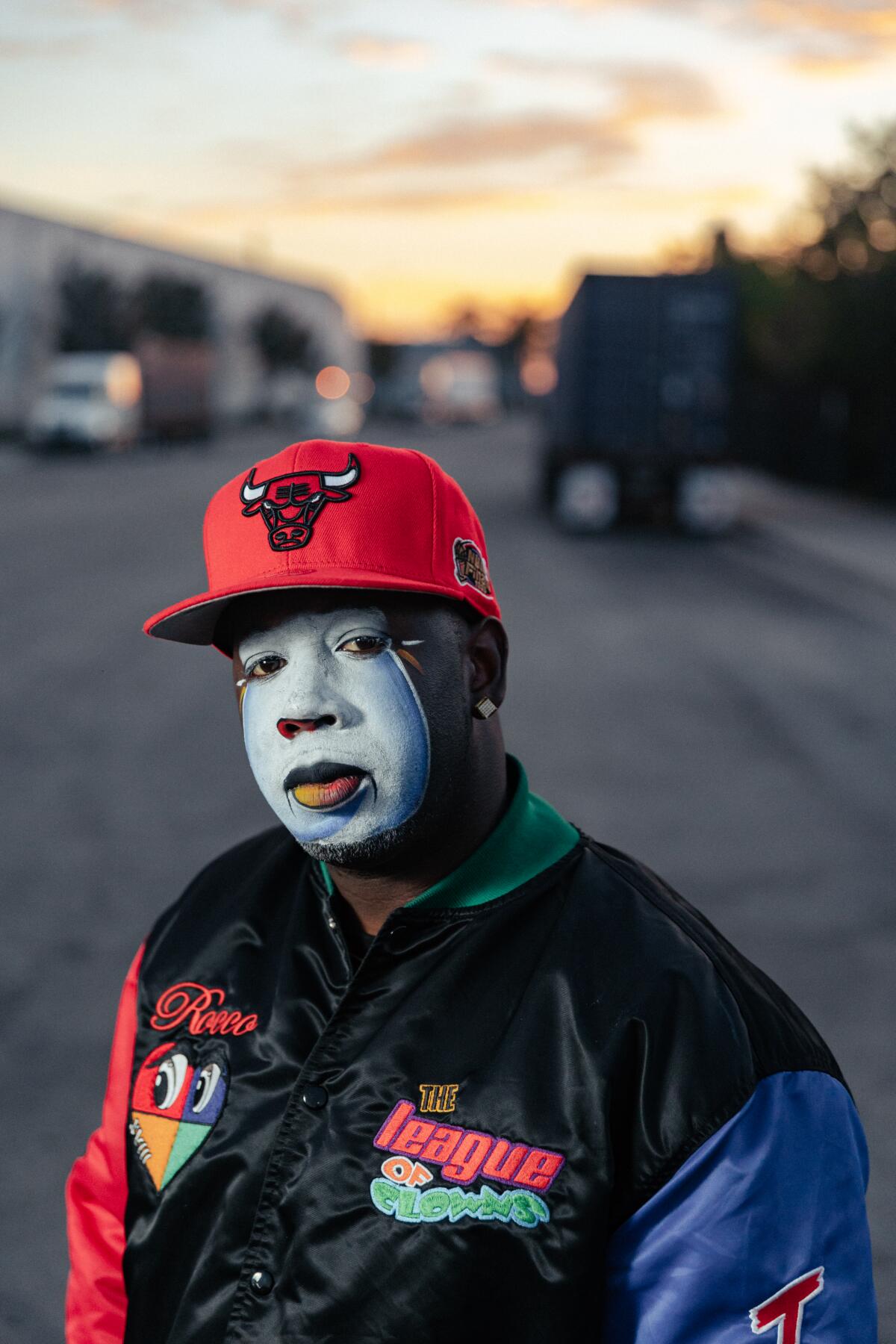
The dancers are a family of sorts, and by focusing on clowning and school, Philpott aims to keep them on a path that sidesteps gangs and street violence in South Los Angeles. They’re also torchbearers for a 30-year-old tradition that originated and flourished in South Los Angeles, evidence of a legacy that continues to build community.
::
Philpott, 38, grew up in Watts, and then Hawthorne, with his mom and two older brothers. He attended a series of high schools and was expelled from each for fighting. Evenings were often spent with local gang members.
He wasn’t a dancer by any means, Philpott said, but he picked up a few moves from the sidelines while watching his brother dance at parties. He auditioned for his first clown group in 2000. Before long, his days were consumed by “school, dance and sleep,” he said. Dance gave Philpott a new community, and a new identity.
“On the gangbanger side, you wanna be the man. You wanna be known. You want people to fear you,” Philpott said. “And on the clown side, you’re still getting known, but now people look up to you. They wanna be like you.”
With one important exception.
His plans to dance were at odds with his mother’s idea of a stable career.
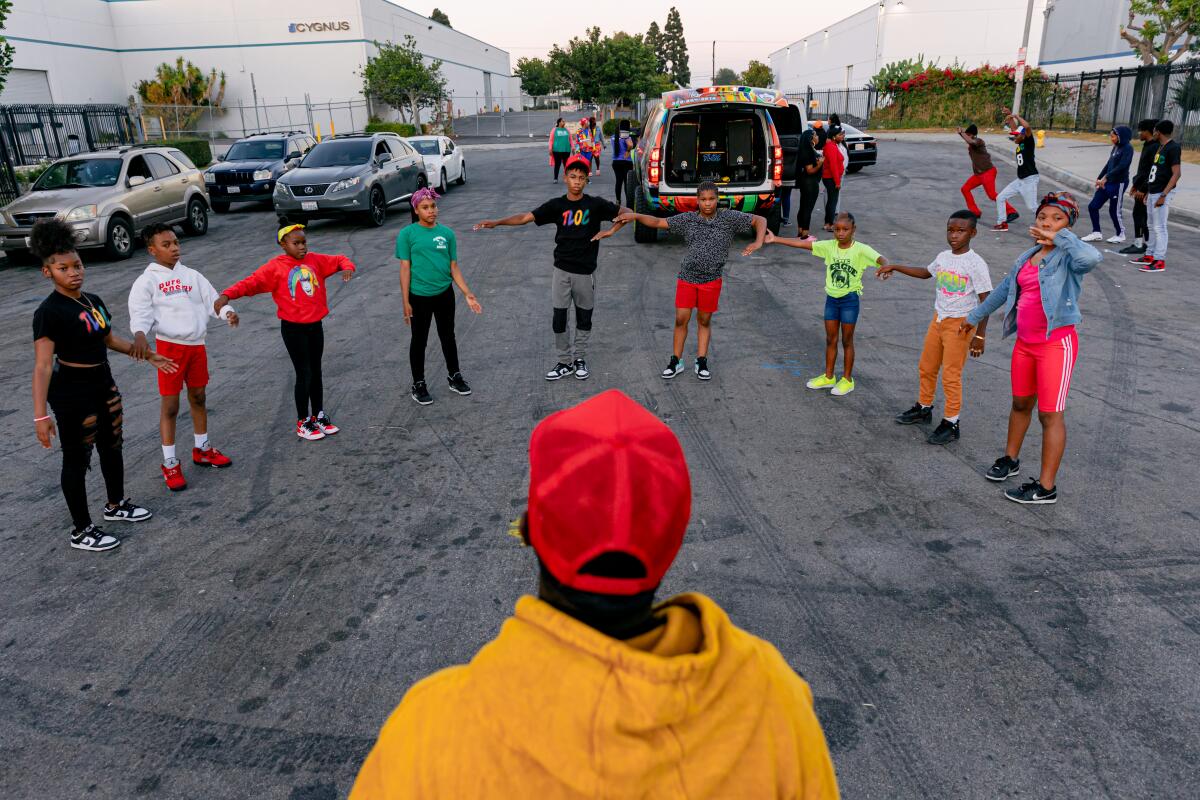

“She basically told me, ‘You go to the Army or the Navy or you get out of my house.’”
After he graduated from R. K. Lloyde Continuation High School in Lawndale, he left.
For the first few years away from home, Philpott didn’t earn money from clowning, so he developed a side hustle — airbrushing — that he continues to this day. His big break came from an invitation to join Thomas Johnson, who is widely acknowledged as the originator of clown dancing and has been working birthday parties and other events for decades as Tommy the Clown.
Johnson launched the city’s first clown-dancing group in the mid-’90s and became the center of a quickly growing universe of dancers. From the beginning, Johnson had encouraged dance battles between young partygoers as a way to blow off steam and have fun.
“The kids loved to compete without having to fight and be angry,” Johnson said.
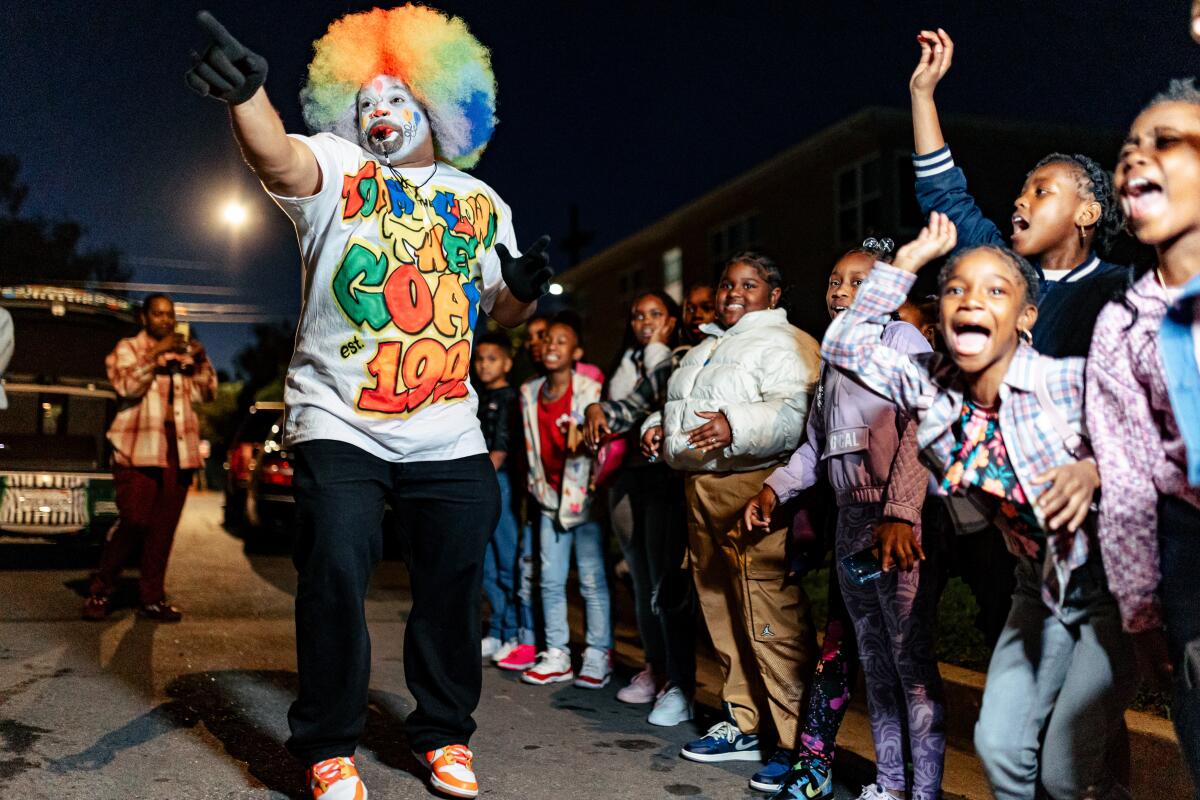
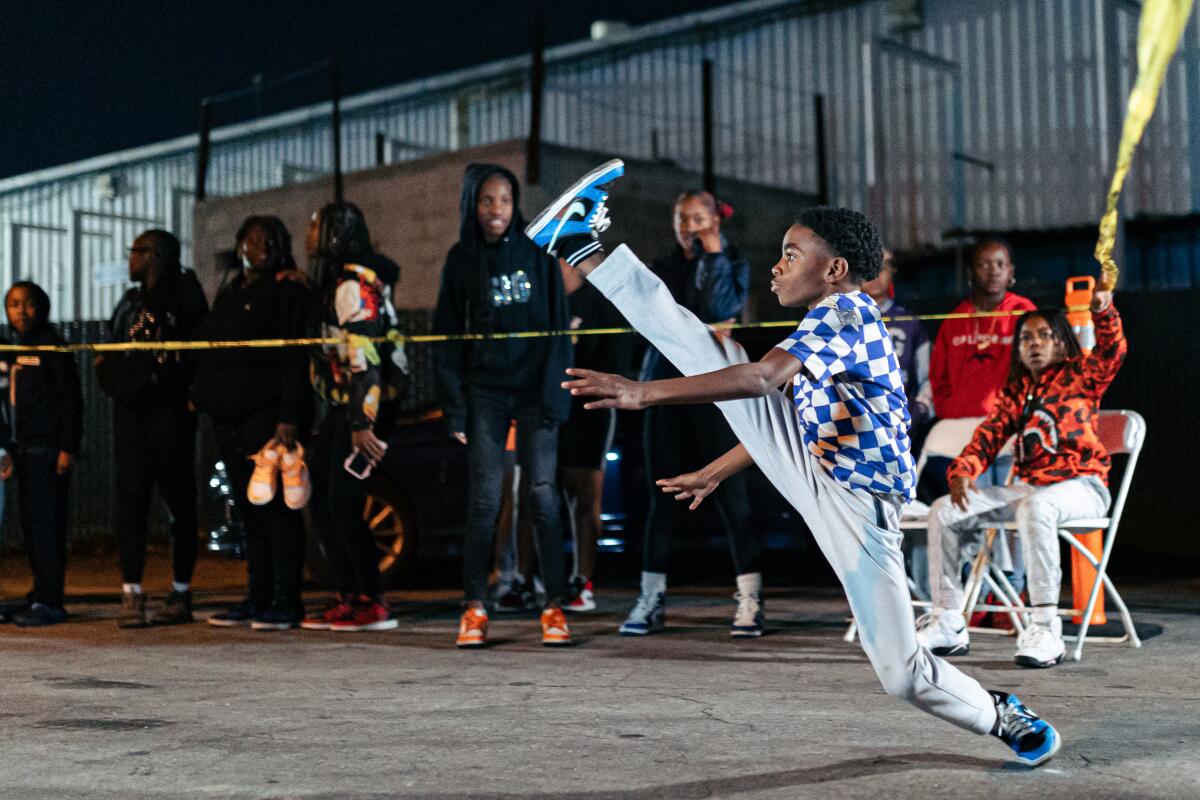
In the early 2000s, he started hosting weekly clown-dancing battles, pushing the performances in a rougher, more hyperkinetic direction: krumping, characterized by frenetic, exaggerated movements — chest popping, arm swinging, splitting, flipping, resembling, yet always stopping short of, a physical fight.
It didn’t take long for Hollywood to catch on, and production companies began to reach out to krumpers about backup dancing in music videos. Between the 2005 documentary “Rize,” which focused on Johnson and the dance culture he paved the way for, and subsequent television deals, entertainment events and tours across Europe, Asia and the South Pacific, krumping gained a global fan base.
Along the way, Philpott became Johnson’s right-hand man, joining him on international stages and handling parties at home with his own truck and dancers from T-Squad, Johnson’s crew. For a few years after “Rize” was released, they taught clowning classes and held battles — called Freestyle Fridays — at the Debbie Allen School of Dance. A young Chris Brown came to train with them in the late 2000s, and other celebrities, including Snoop Dogg and Madonna, have hired Johnson and his crew over the years to perform in videos, on stages and at private parties.
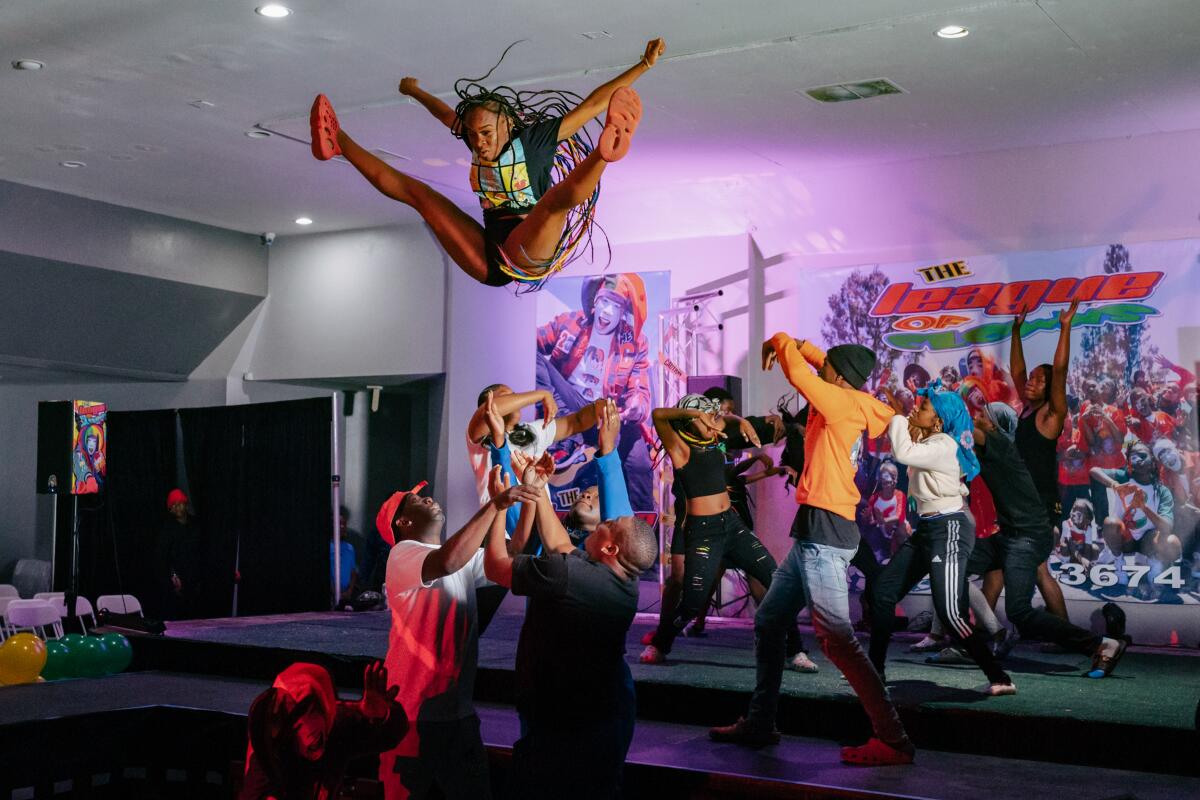
After 16 years under Johnson’s wing, Philpott left the T-Squad in 2018. The feast-or-famine lifestyle — ranging from getting a portion of international performance fees, to scraping by at home if they weren’t performing or booking enough parties— was wearing him down. His plan was to become a full-time airbrush artist. But Philpott said a series of conversations with pastors and friends in the ensuing months convinced him to test out the idea of his own crew. He announced his auditions on Instagram in April 2018 and began receiving bookings before he even had dancers.
With nearly a million followers across his social channels, and consistently sold out dance battles, Johnson remains the face of the hip-hop clown and krumping community. But Philpott and The League Of Clowns are growing steadily. Philpott provides lessons, a wardrobe, food and transportation to his clowns. Following in Tommy’s footsteps, he’s also secured entertainment and brand deals for a few of his clowns, from a YG music video to a campaign with the fashion label Off-White.
In 2020, Philpott sponsored a clown group to begin performing in Louisiana, and he dreams of spreading The League of Clowns to youth across the country. “You know, everybody ain’t gonna be able to play baseball,” he said. “But most of the youth out here in the city are able to shake a leg a little bit.”
::
Before his mother died in 2016, she came to two parties her son had led for Johnson. After watching his crew perform and the way the children loved them, Philpott said, his mother told him she was proud that he stuck to clowning. “She was able to see before she died that we touched some people.”
Philpott’s dancers are testimony.
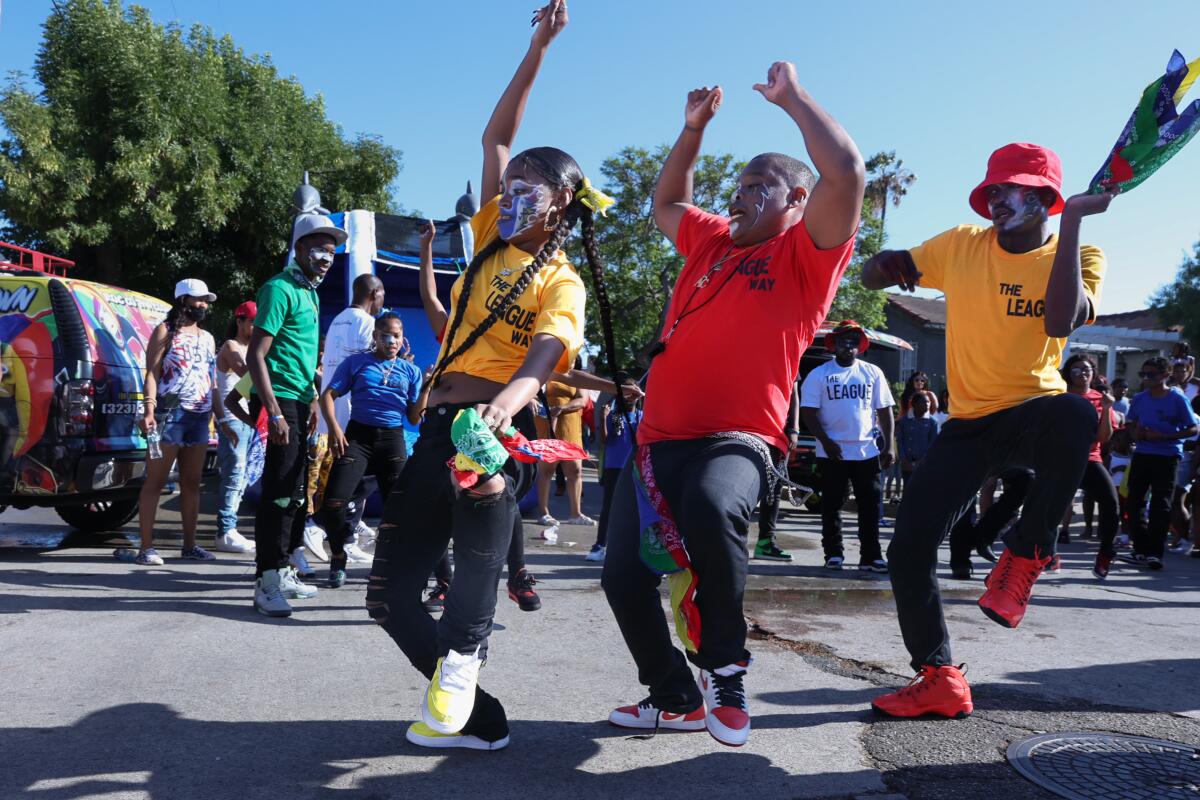
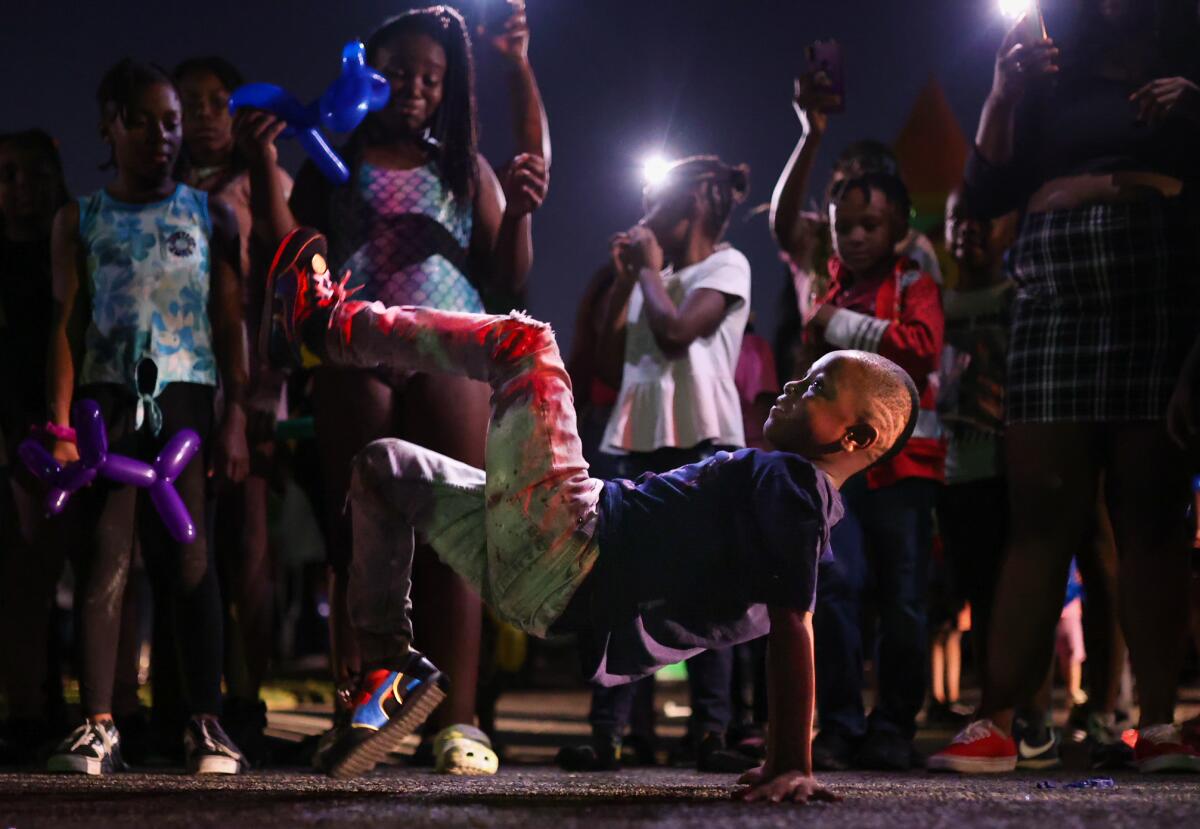
Mya Henry said memories of watching the hip-hop clowns as a child inspired her to give her all at each performance, adding, “Every single party is like a full-circle moment.”
Henry graduated from Torrance High School in spring, and after a summer full of clowning — her signature face paint is a bold multicolored handprint — she left Los Angeles in the fall to study business at Clark Atlanta University. She said Philpott has been calling regularly to check on her and make sure she’s staying on top of her studies.
“It’s not about dance for him,” she said. “It’s about teaching kids that whatever they want to do, they can. And he helps us get the tools to do that.”
::
The party in Carson was about to end, and Philpott led the packed street in singing to Maison Jackson and his mother, Sha’kia Jackson, as they danced together in a ring of lights. The sky was a deep purple, and the circus-colored bouncy house and slide were hulking silhouettes on the horizon.
“Daddy, get up here and sing to your son!” Philpott called to Jarramie Jackson, who lifted his 5-year-old-son and led the crowd in one final “happy birthday” of the evening.
Bathed in the red glow of taillights, Roc’co Tha Clown turned up the music. Members of his crew danced their way back to the trucks as the dance battles they’d started among the children played out. It was 8:30 and The League had two remaining gigs.
The next afternoon, they would start it all over again.
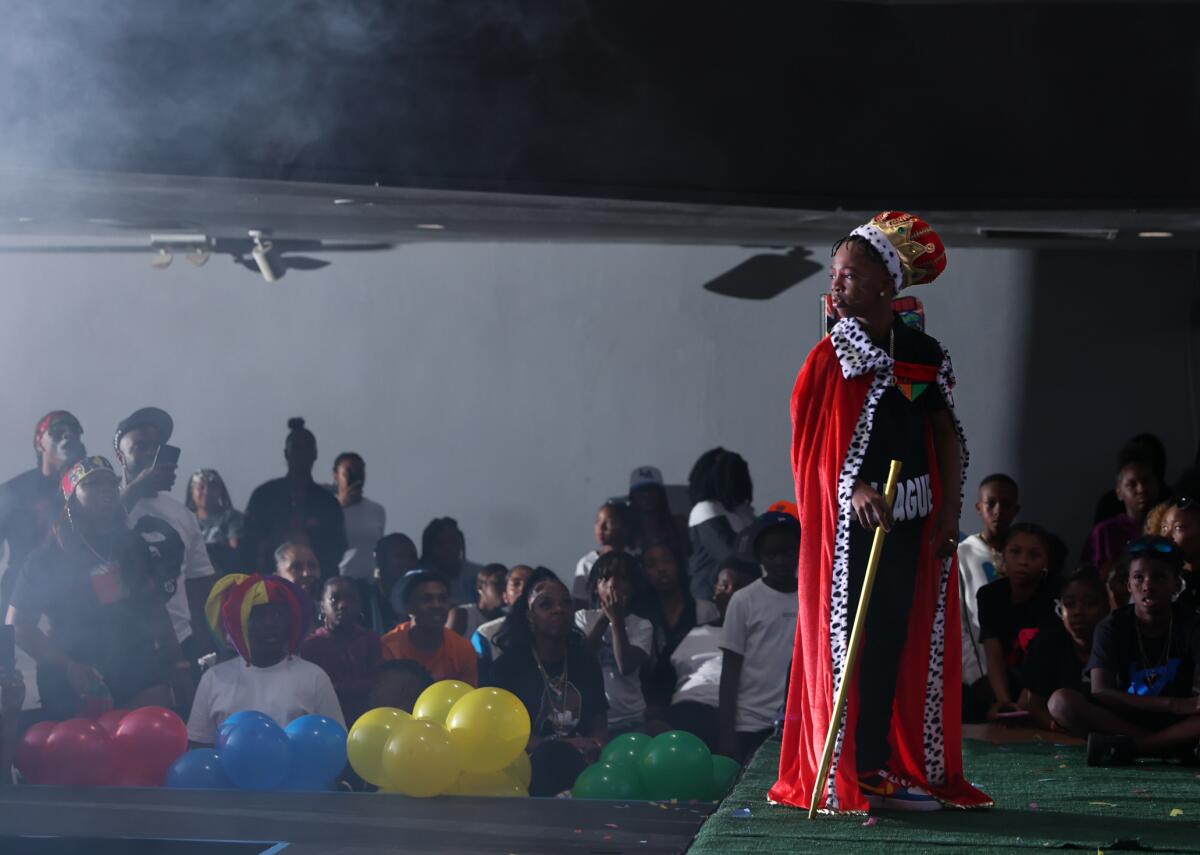
Sign up for Essential California
The most important California stories and recommendations in your inbox every morning.
You may occasionally receive promotional content from the Los Angeles Times.